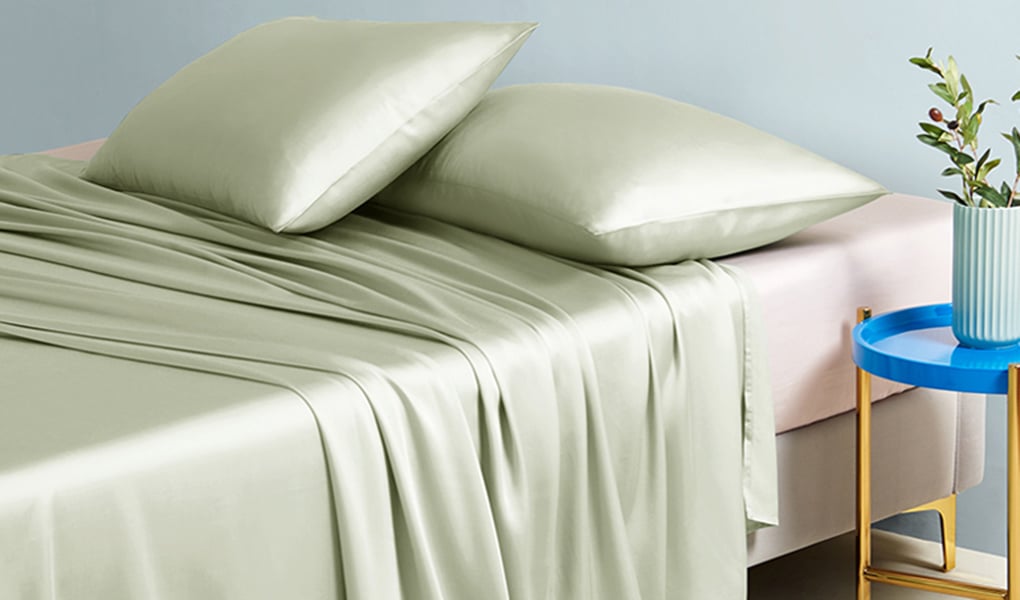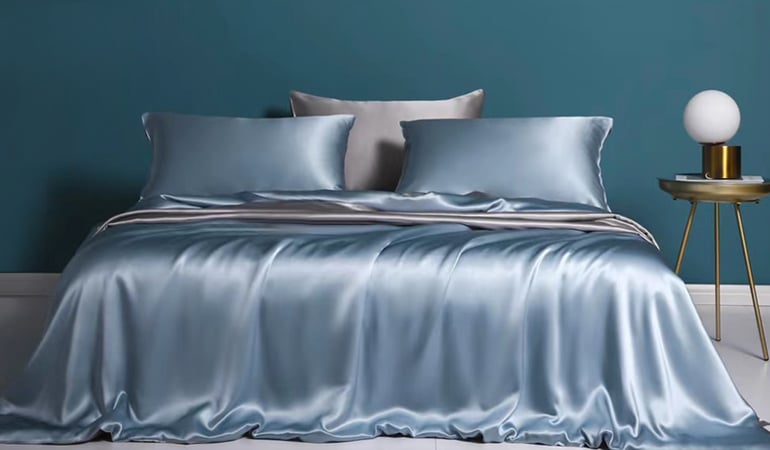Mulberry silk is always considered the most expensive type of natural silk. Its smoothness and stronger fiber, both show the unique characters it. What makes it so expensive? When you begin shopping for mulberry silk sheets you should first educate yourself on the way in which silk is measured for quality and why is it superior to other types of silk. In general, it is helpful to know how mulberry silk is made.
Mulberry silk is made from the silkworms of the Bombyx mori moth. The moth has one job to do and that is to lay eggs. After it lays about 500 eggs, its job is finished and it dies. The tiny pinpoint size eggs are kept at 65 degrees Fahrenheit with the temperature slowly and carefully raised to 75 degrees Fahrenheit to hatch the eggs.
The tiny silkworms that are born are then fed an exclusive diet of mulberry leaves 24 hours a day, 7 days a week (mulberry leaves are the only food the Bombyx mori moth will eat). After about a month of the constant gorging on the mulberry leaves, the silkworms will have increased their weight about 10,000 times and will have built up enough energy to start spinning their cocoon. It takes anywhere from three to as long as eight days for the silkworm to weave the cocoon.
During this process, the silkworm secretes a liquid protein called fibroin from its salivary glands. The fibroin solidifies upon contact with air, forming a filament that the silkworm uses to create its cocoon. The cocoon serves as a protective structure for the silkworm during its transformation into a moth.
To harvest the silk, the cocoons are carefully collected and subjected to a process called “reeling.” Reeling involves carefully unwinding the silk filaments from the cocoons. The cocoons are either heated or immersed in hot water to soften the silk fibers, making them easier to unwind. Skilled workers gently pull the silk filaments from several cocoons simultaneously to form a single, continuous thread. This delicate process requires precision and expertise to ensure the integrity of the silk filaments.
Once the silk filaments are unraveled, they are combined to create a single strand of silk thread. Several strands are then twisted together to form a stronger and more durable silk yarn. The silk yarn is then ready for weaving into various silk products, such as sheets, clothing, or accessories.
Mulberry silk is highly valued and considered the most luxurious type of silk due to several factors. Firstly, the silkworms used to produce mulberry silk are exclusively fed a diet of mulberry leaves. This controlled diet results in superior silk quality and fiber strength. The resulting silk is smoother, more lustrous, and finer compared to silk produced by other silkworm species.
Furthermore, the reeling process used for mulberry silk is meticulous and labor-intensive. The careful extraction of silk filaments from the cocoons ensures a continuous, unbroken thread, which contributes to the fabric’s superior quality. The precision and craftsmanship involved in the production of mulberry silk make it a time-consuming and skilled task, adding to its value and higher price.
In conclusion, mulberry silk is made from the cocoons of the Bombyx mori moth. The silkworms are fed a strict diet of mulberry leaves and spin their cocoons using silk filaments. The unraveled filaments are then carefully reeled to create a continuous thread, which is subsequently woven into various silk products. The exclusivity of the silkworm diet, the meticulous reeling process, and the resulting finer and stronger silk fibers contribute to the higher cost of mulberry silk compared to other types of silk.



